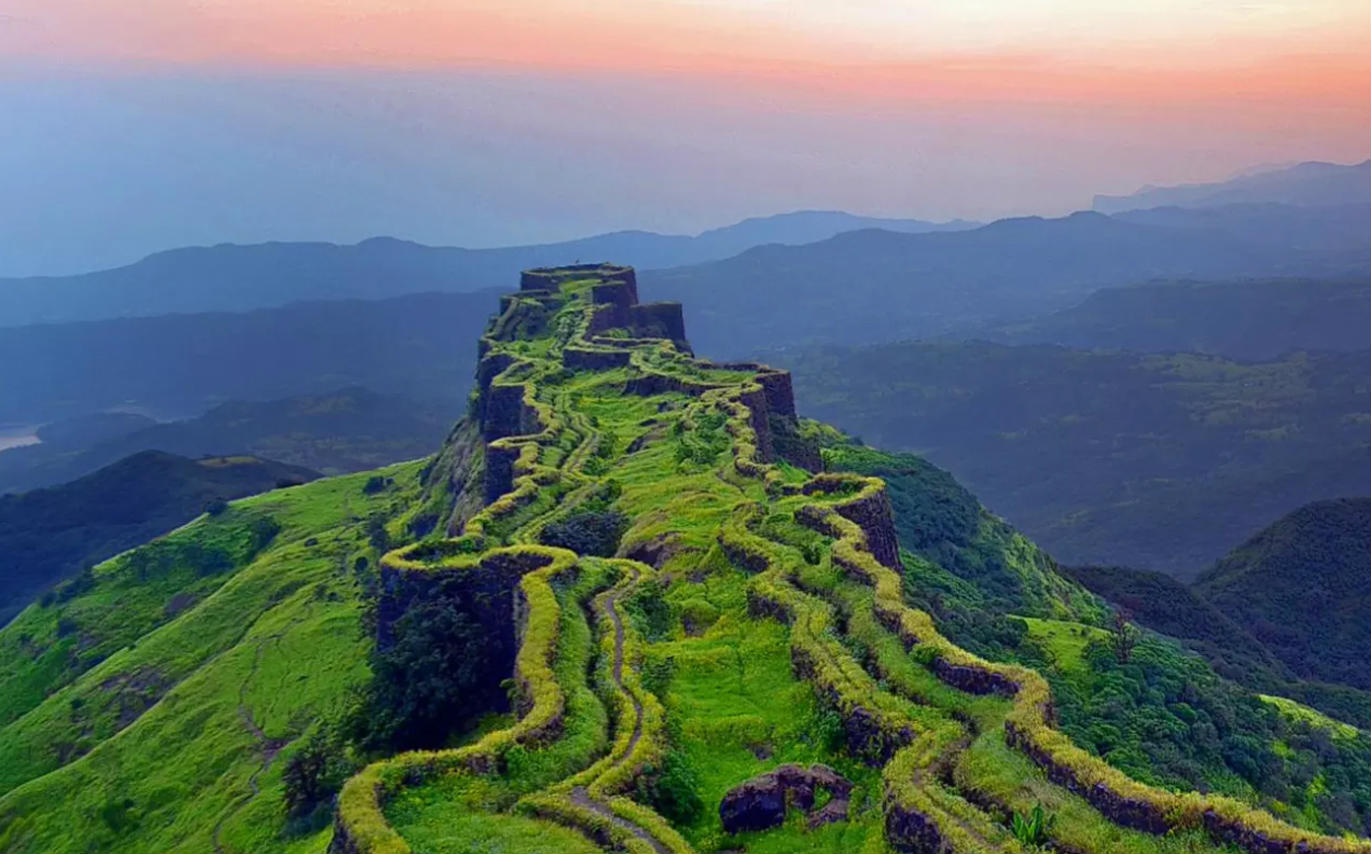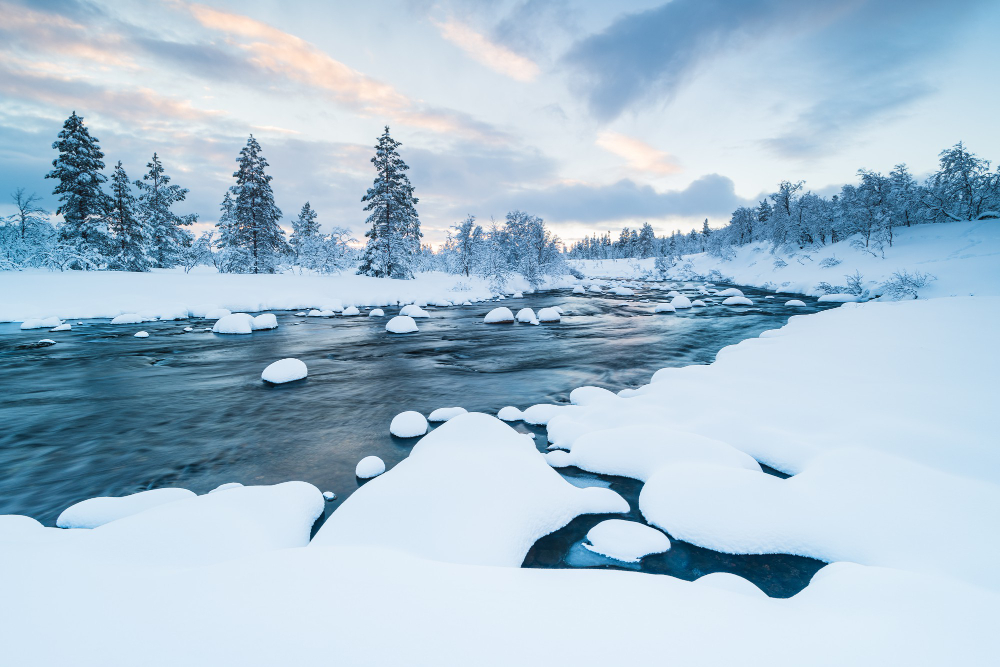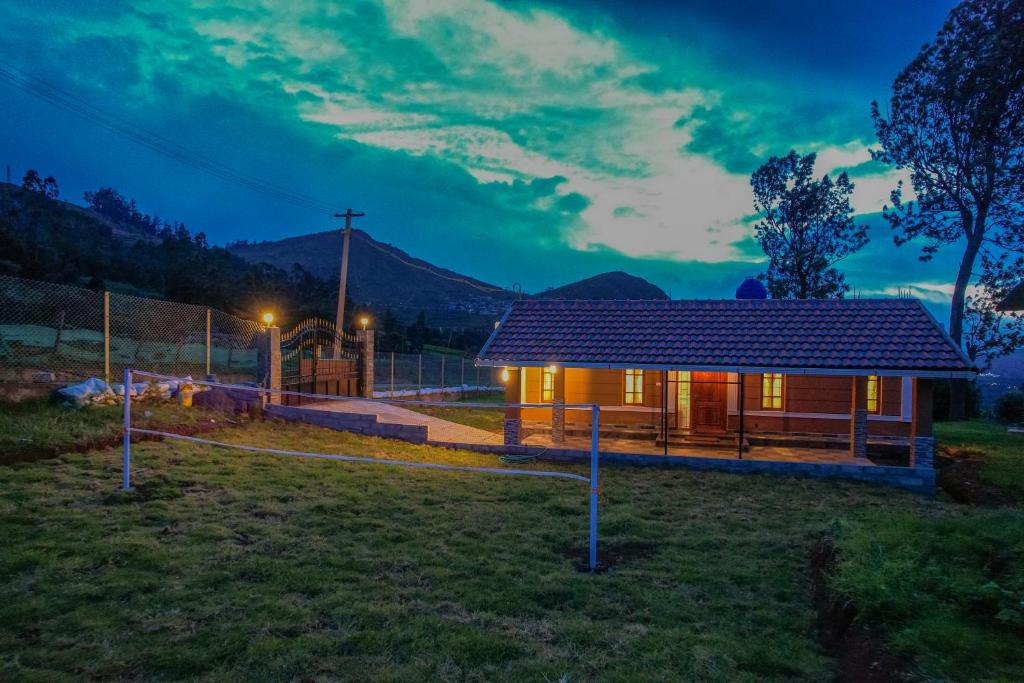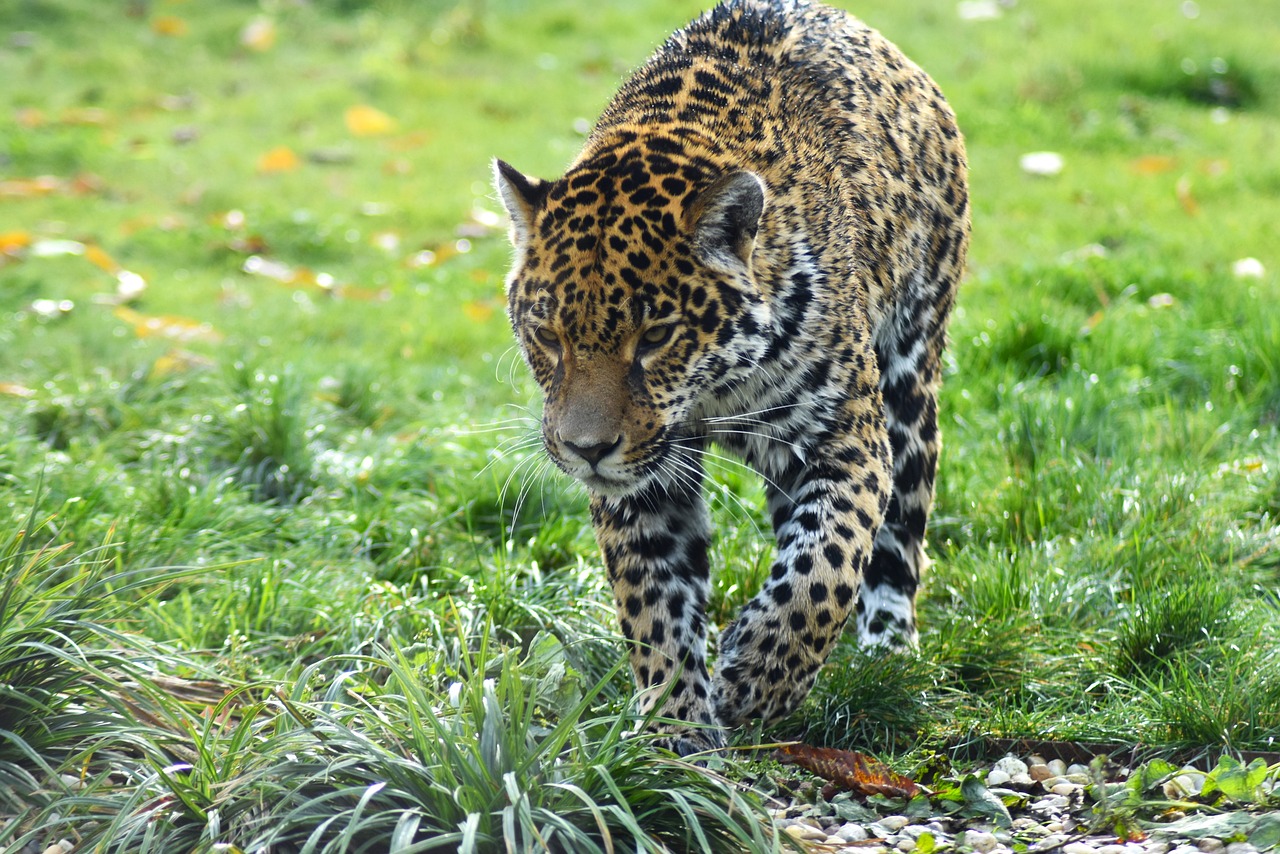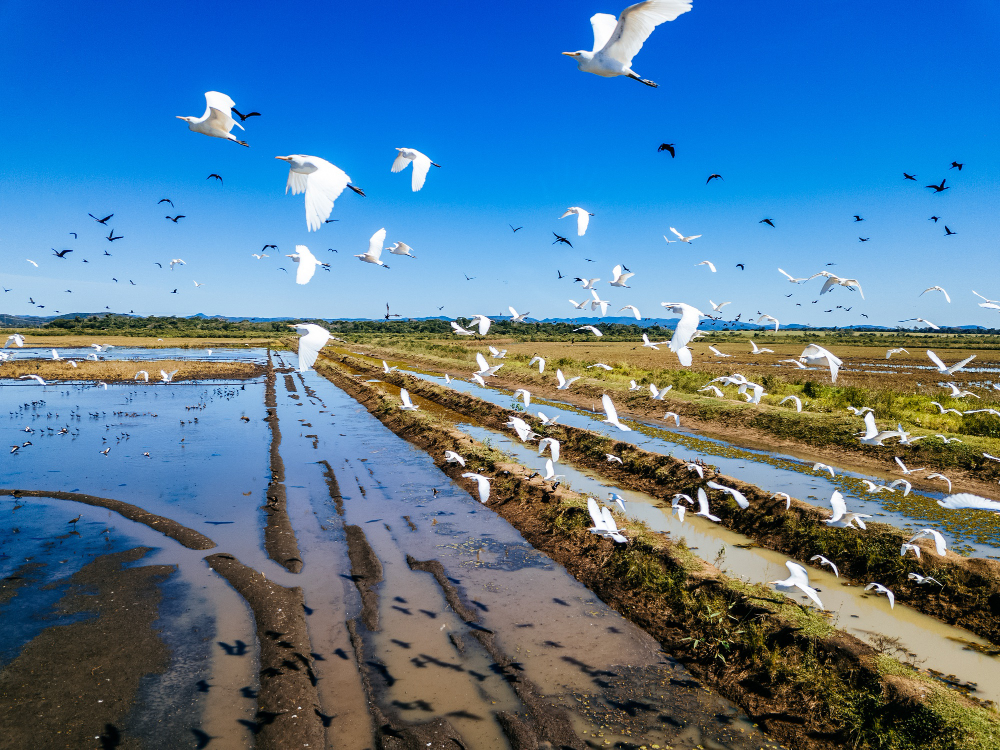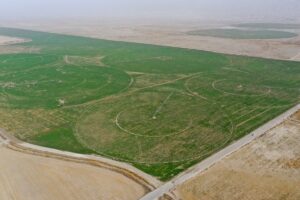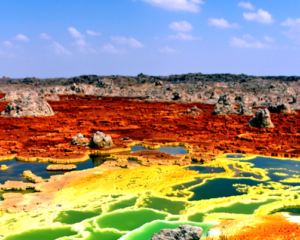 Pin
Pin Photo source: AFP via Getty Images
When folks hear about police officers in Brazil riding massive water buffalo through flooded streets and marshlands, their first instinct is to check if they’ve accidentally stumbled into some tall tale or frontier legend that got loose from a history book. But I’m here to tell you that this is as real as the ground beneath your feet—though considerably wetter than most ground you’re likely standing on. The whole business sounds like something a creative novelist dreamed up after eating too much spicy food before bedtime, yet it’s been happening for years in a place where regular policing simply won’t work.
You see, on Marajó Island in northern Brazil, the brazil water buffalo riding police force doesn’t just exist for the entertainment of curious outsiders or the delight of newspaper writers. These officers climb onto the backs of twelve-hundred-pound Asian water buffalo every single day because Mother Nature left them no other sensible choice. The island sits right where the Amazon River dumps into the Atlantic Ocean, creating a watery wonderland that laughs at automobiles, mocks motorcycles, and turns regular horses into nervous, unhappy creatures. When half your jurisdiction spends six months underwater and the other half is thick with mud that could swallow a jeep whole, you either adapt or you quit trying to enforce the law altogether. These Brazilian officers chose adaptation, and they did it with the kind of practical genius that would make any frontier lawman proud.
Table of Contents
The Island That Cars Forgot
 Pin
Pin Photo source: AFP via Getty Images
Marajó Island isn’t just wet—it’s spectacularly, defiantly, almost comically wet. This massive chunk of land sitting at the mouth of the Amazon River covers an area roughly the size of Switzerland, but you’d be hard-pressed to drive across it in anything with wheels. During the rainy season, which lasts about half the year, the whole place transforms into an enormous shallow lake dotted with trees and buildings. The streets of Soure don’t just get puddles—they become rivers. Fields turn into lagoons. What passes for solid ground in the dry months becomes a treacherous soup of mud and water that’ll trap a vehicle faster than you can say “I should’ve brought a boat.” The Portuguese who first settled here centuries ago quickly learned that conventional European notions about transportation simply didn’t apply, and that lesson hasn’t changed in four hundred years.
Now, regular horses can handle some water, sure, but they’re not particularly enthusiastic about standing belly-deep in murky swamp water for hours on end. They get nervous, tired, and downright cranky—which is precisely the opposite of what you want in an animal that’s supposed to help you chase criminals or patrol uncertain terrain. Motorcycles and cars just sink or stall out, becoming expensive paperweights. The police tried various solutions over the years, but nothing worked quite right until somebody had the bright idea to look at what the local ranchers had been using successfully for generations. Those Asian water buffalo that’d been brought over for farming weren’t just tolerating the wet conditions—they were thriving in them, treating the flooded landscape like their natural home.
Meet Your New Partner—He Weighs Over Half a Ton
 Pin
Pin Photo source: AFP via Getty Images
Asian water buffalo are not dainty creatures, and anybody who tells you otherwise is either lying or hasn’t stood next to one. These animals can weigh between 1,200 and 2,600 pounds, which means the smaller ones are still heavier than most grand pianos. They’ve got thick, curved horns that sweep backward like scimitars, hooves the size of dinner plates, and a general demeanor that suggests they’ve seen it all and aren’t particularly impressed. But here’s the thing that makes them perfect for police work in Soure—they’re surprisingly gentle, remarkably intelligent, and they treat swampy water the way a fish treats an ocean. Their ancestors evolved in the wetlands of Asia, so slogging through knee-deep mud isn’t an inconvenience for them; it’s practically a spa day. Where a horse would struggle and panic, a water buffalo just lowers its massive head and keeps plodding forward with the kind of patience that would make a saint jealous.
The buffalo used by Soure’s police force are specially selected and trained, though “trained” might be too fancy a word for what’s mostly just getting them comfortable with having uniformed officers on their backs. These aren’t wild animals—they’ve been domesticated for thousands of years, and the ones in Marajó have been working alongside humans for generations. They respond to simple commands, they don’t spook easily at loud noises or sudden movements, and they’ve got enough strength to carry a full-grown officer in uniform through terrain that would defeat just about any other riding animal. What’s more, they’re surprisingly sure-footed despite their enormous size, able to navigate slippery banks and hidden underwater obstacles that would trip up something more delicate. The officers will tell you that once you get used to sitting eight feet off the ground on a moving mountain of muscle, it’s actually one of the steadiest rides you’ll ever experience.
A Day in the Life of a Buffalo-Mounted Officer
The morning patrol starts like any other police shift, except instead of jingling car keys, Officer Silva grabs a leather saddle and heads to the stable where his partner—a massive buffalo named Trovão, which means “Thunder”—is already awake and chewing contentedly on some grass. The saddle they use isn’t fancy, just sturdy leather designed to distribute weight evenly across that enormous back, with stirrups positioned for a rider who needs to sit upright and maintain visibility across the flooded landscape. Silva talks to Trovão while saddling up, the same easy conversation you might have with any working partner, because these officers have learned that the buffalo respond better when treated as colleagues rather than mere transportation. Once mounted, Silva towers above the waterline, able to see clear across the flooded streets and spot trouble that would be invisible to someone slogging through on foot.
The actual patrolling covers everything regular police work does, just at a slower, more deliberate pace suited to an animal that isn’t built for speed chases but excels at steady, relentless coverage of difficult terrain. Silva and Trovão wade through water that reaches the buffalo’s chest, cross muddy fields where vehicles would sink to their axles, and navigate narrow paths between buildings where the floodwaters have created temporary canals. They check on remote homesteads that become islands during the wet season, respond to calls about property disputes or domestic disturbances, and maintain that visible presence that reminds folks the law still applies even when half the town is underwater. The buffalo’s calm temperament actually helps defuse tense situations—it’s hard to stay agitated when there’s a twelve-hundred-pound animal standing there placidly chewing its cud while the officer talks things through with you.
Why a Buffalo Beats a Jeep Every Single Time
You might be sitting there thinking that in our modern age of all-terrain vehicles and amphibious technology, surely there’s some mechanical solution that could outperform an animal that moves at the blistering speed of about three miles per hour. But here’s where the buffalo’s ancient design reveals itself as superior to anything engineers have cooked up in a factory. Those massive hooves distribute weight across a surface area that prevents them from sinking into soft mud the way narrow tires do—it’s the same principle as snowshoes, but nature figured it out millions of years before humans invented winter sports. When a buffalo steps into knee-deep water mixed with sticky clay, those hooves press down and then pull up with enough suction-breaking force to keep moving forward steadily, whereas a vehicle’s spinning tires just dig themselves deeper into trouble. Add to that the fact that buffalo don’t need fuel, don’t break down and require expensive replacement parts, and can actually feed themselves by grazing during breaks, and you’ve got a patrol vehicle that’s essentially self-maintaining.
Then there’s the practical matter of repairs and upkeep in a region that’s geographically isolated and economically modest. When your police department’s budget doesn’t include a lot of zeros, maintaining a fleet of specialized amphibious vehicles becomes financially impossible—even if such vehicles could handle the terrain, which is doubtful. A water buffalo, by contrast, needs some grass, some water, basic veterinary care that local ranchers already know how to provide, and occasional hoof trimming. No spark plugs, no transmission fluid, no computer diagnostics, no waiting three months for a replacement part to arrive from São Paulo. When Trovão gets a cut or feels under the weather, the same veterinarian who treats the ranchers’ herds can handle it for a fraction of what mechanical repairs would cost. The officers have discovered what farmers knew generations ago—sometimes the old ways persist not because people are stubborn or backward, but because they’re genuinely the most sensible solution to a particular problem.
Learning to Ride a Living, Breathing Patrol Vehicle
Now, you might assume that any fellow who knows how to ride a horse can just hop onto a water buffalo and start patrolling, but that assumption would land you flat on your backside in a muddy puddle faster than you can holler for help. Buffalo move differently than horses—they’ve got a rolling, swaying gait that comes from their wider build and those massive shoulders doing most of the work. The center of gravity sits lower and further forward, so riders who’ve trained on horses find themselves leaning all wrong at first, fighting against the animal’s natural motion instead of moving with it. The Soure police department runs new officers through several weeks of buffalo familiarization before they’re allowed out on actual patrol, starting with just standing near the animals and learning to read their body language, because a buffalo that’s annoyed or uncomfortable will let you know through subtle ear movements and shifts in posture that you’d better pay attention to unless you fancy getting dumped into the swamp.
The training progresses slowly and deliberately, with experienced buffalo-riding officers teaching the newcomers the same way their grandfathers taught them—through patient repetition and careful observation rather than any formal manual or classroom instruction. Recruits learn how to approach a buffalo without startling it, how to saddle it properly so the weight distributes evenly and doesn’t cause sores or discomfort, and how to mount an animal that stands considerably taller at the shoulder than a regular horse. They practice sitting correctly while the buffalo walks through progressively deeper water, getting comfortable with that swaying motion and learning to trust that the animal knows what it’s doing even when the rider can’t see the ground beneath all that murky flood water. Most importantly, they learn to communicate through gentle pressure and voice commands rather than force, because trying to bully a creature that outweighs you by a thousand pounds is a fool’s errand that ends badly for the fool.
What the Folks in Soure Think About Their Famous Lawmen
The people of Soure have a relationship with their buffalo-riding police that’s equal parts pride, affection, and practicality—the kind of attitude you develop when something unusual becomes so woven into daily life that it stops seeming unusual at all. Local shopkeepers barely glance up anymore when an officer rides past their storefront on a buffalo that’s casually munching grass while technically on duty. Children growing up in Soure don’t think it’s remarkable that the police ride animals instead of driving cars, any more than kids in New York City think it’s strange that their police walk beats on crowded sidewalks. The buffalo patrols have been operating long enough now that multiple generations have grown up watching them, and for these folks, the sight of Officer Silva atop Trovão wading through flooded streets is simply what policing looks like. When tourists show up with cameras and excited expressions, the locals tend to smile with a mixture of amusement and bemusement, the way anyone does when outsiders get worked up over something you’ve always taken for granted.
But beneath that casual acceptance runs a genuine appreciation for how well the system works and what it represents about their community’s character. The buffalo patrols have become a symbol of Soure’s ability to adapt and thrive despite challenging circumstances, a point of distinction that sets them apart while also connecting them to their agricultural heritage and the practical wisdom of their ancestors. Elderly residents remember when the police first started experimenting with buffalo in the 1970s, and they’ll tell you stories about the skepticism and jokes that circulated before everyone realized this odd idea actually solved problems that modern solutions couldn’t touch. Today, the buffalo-mounted officers appear on the city’s promotional materials, feature in local festivals, and serve as ambassadors when journalists and documentary makers come calling. The community protects and supports the program fiercely, understanding that it’s not just effective law enforcement—it’s a piece of their identity that deserves preserving.
The Peculiar Problems of Policing from Eight Feet Up
When Officer Mendes joined the buffalo patrol unit, he expected challenges related to riding a massive animal through swamps—and he got those in abundance—but nobody warned him about the truly bizarre difficulties that come with conducting police work from atop a creature that has its own opinions about where to go and when to stop. There’s the matter of paperwork, for instance, which becomes considerably more complicated when your desk is actually a buffalo’s back and you’re trying to write a citation while said buffalo decides it’s hungry and starts lowering its head to nibble at some particularly appealing watergrass. Radio communication gets interesting too, especially when the static-filled transmission from headquarters gets interrupted by your mount deciding to vocalize its feelings with a deep, rumbling bellow that drowns out everything within a hundred yards. And then there’s the delicate business of maintaining authority and professional dignity during a tense confrontation when your partner suddenly decides it needs to relieve itself, which buffalo do with an impressive lack of discretion or concern for timing.
The practical challenges extend beyond the comedic moments into genuinely difficult tactical considerations that regular officers never face. When you’re sitting eight feet off the ground on an animal that can’t climb stairs, respond to suspects on second floors or inside buildings becomes a dismounting operation that leaves your transportation outside and potentially vulnerable. High-speed pursuits are completely off the table—a buffalo’s top speed might reach fifteen miles per hour if you’re lucky and it’s motivated, which means any criminal with functional legs and a decent head start can simply run away faster than you can follow. The officers have adapted by focusing on deterrence, community relationships, and the psychological advantage of arriving on an animal so large and imposing that most troublemakers lose their enthusiasm for causing problems. They’ve also developed creative solutions, like coordinating with boat patrols for situations requiring speed, or working in pairs so one officer can dismount while the other maintains mobile oversight.
How a Small Island Police Force Became a Global Curiosity
The buffalo-riding police of Soure might have remained a local peculiarity known only to Brazilians and the occasional adventurous traveler if not for the internet’s insatiable appetite for stories that make people stop scrolling and say “wait, what?” Sometime in the early 2000s, a tourist snapped a photograph of an officer in full uniform sitting astride a massive water buffalo while patrolling a flooded street, and that image started making its way around the world through email forwards and early social media platforms. What struck people wasn’t just the novelty—plenty of places have unusual traditions—but the sheer practicality of it combined with the surreal visual of modern law enforcement merged with ancient animal husbandry. News outlets picked up the story, documentaries followed, and suddenly Soure found itself fielding interview requests from journalists in Tokyo, London, and New York who wanted to understand how this arrangement came to be and whether it actually worked as well as it appeared to.
The attention has been a mixed blessing for the small police department that never set out to become famous. On one hand, the global interest has brought recognition and a certain amount of pride to both the officers and the community, validating their practical solution to a genuine problem and highlighting the ingenuity of people who refuse to let difficult geography defeat them. Tourism has increased modestly, bringing some economic benefit to an area that can use it, and the police department occasionally receives donations of equipment and supplies from admirers around the world who’ve been charmed by their story. On the other hand, the officers themselves will tell you with wry humor that they’re just doing their jobs the best way they know how, and all the cameras and attention can sometimes feel like a distraction from the actual work of keeping their community safe. They’ve learned to accommodate the curiosity with grace while maintaining their focus on what matters—serving the people of Soure, whether anyone’s watching or not.
The Future of Four-Legged Law Enforcement
The question that hangs over Soure’s buffalo patrol unit like morning mist over the flooded plains is whether this arrangement represents a permanent solution or merely a temporary adaptation waiting to be replaced by some future technology that hasn’t been invented yet. The officers themselves have mixed feelings about this—some of the veterans hope the tradition continues indefinitely, seeing it as an irreplaceable connection to their region’s character and history, while younger recruits sometimes wonder if they’ll spend their entire careers riding animals or eventually transition to something more conventional. The police administration takes a pragmatic view, pointing out that as long as Marajó Island continues to flood six months out of every year and as long as their budget remains modest, the buffalo serve a purpose that no available alternative can match for effectiveness combined with affordability. Climate predictions suggest the Amazon delta region might actually see increased flooding in coming decades, which would make the buffalo even more essential rather than obsolete.
There’s also the matter of cultural preservation and what gets lost when communities abandon their distinctive practices in favor of standardized modern solutions. The buffalo patrols have become woven into Soure’s identity in ways that matter beyond simple law enforcement efficiency—they represent a living connection to the agricultural heritage that shaped the island, a demonstration that local knowledge and traditional methods sometimes outperform imported technology, and a reminder that adaptation doesn’t always mean adopting whatever’s newest or most expensive. The younger generation of officers, despite their occasional yearning for more conventional patrol vehicles, generally understand and appreciate this deeper significance. They’re training the next group of recruits with the same patient methods they learned, ensuring the skills and knowledge get passed down even as the modern world encroaches further into this watery corner of Brazil. The buffalo themselves seem unconcerned with these philosophical debates, content to continue their steady patrols through the swamps as long as someone keeps saddling them up each morning.
Other Places Where Police Got Creative with Transportation
Soure’s buffalo-mounted officers hold the distinction of being the only police force in the world that relies on these particular animals for regular patrol duty, but they’re hardly alone in recognizing that standard patrol cars don’t work everywhere and that sometimes you need to get inventive about how lawmen move through their jurisdiction. Up in the Canadian Rockies, the Royal Canadian Mounted Police still occasionally use horses for mountain patrols in areas where vehicles can’t navigate the narrow trails and steep terrain, though these days it’s more supplementary than primary. In Venice, Italy, the police patrol the canals in boats because, well, the streets are water and cars would sink immediately—though their situation differs from Soure’s in that everybody expected water to be the primary transportation medium when they built the city on a lagoon in the first place. The Swiss have mountain police units that patrol on skis during winter months, gliding through snow-covered terrain where even snowmobiles would struggle with the steep angles and avalanche risks.
What sets Soure apart from these other creative solutions isn’t just the choice of animal, but the complete integration of an ancient agricultural tradition into modern law enforcement in a way that serves as the primary—not supplementary—method of policing an entire jurisdiction. The Mounted Police in Canada could theoretically switch entirely to vehicles and helicopters if budget allowed, and Venice’s boat patrols use modern motorized craft rather than traditional gondolas. But in Soure, the buffalo aren’t a charming holdover from the past or a special unit for unusual circumstances—they’re the backbone of everyday policing, chosen not for tradition’s sake but because they genuinely work better than any alternative the modern world offers. That makes their approach less about preserving heritage and more about honest problem-solving, which perhaps explains why it’s lasted so long and earned such respect. When your method succeeds not despite being unconventional but because it’s unconventional, you’ve found something worth keeping regardless of what century you’re living in.
What Soure's Buffalo Police Teach Us About Solving Problems
The real lesson hiding inside this story about Brazilian officers riding water buffalo through flooded streets has nothing to do with animals or policing specifically, and everything to do with how human beings approach problems when the obvious solutions don’t work. Most police departments facing Soure’s geographic challenges would’ve spent years writing grant proposals for expensive amphibious vehicles, forming committees to study the issue, and ultimately either giving up or implementing some costly compromise that sort of worked but never quite felt right. Instead, the folks in Soure looked around at what was already present in their environment, recognized that local ranchers had been successfully navigating the same terrain for generations using water buffalo, and had the good sense to adopt a proven solution rather than insisting on inventing a new one. That kind of practical wisdom—the willingness to learn from your surroundings and adapt existing resources rather than always reaching for something high-tech and expensive—seems to be increasingly rare in our modern world where every problem supposedly needs a complicated solution involving computers and venture capital.
There’s something deeply satisfying about watching a simple, elegant solution succeed where complex modern approaches fail, and perhaps that’s why the buffalo-riding police of Soure have captured imaginations around the globe. We live in an era that often assumes newer automatically means better, that technology can solve anything if we just throw enough money and engineering talent at the problem, and that traditional methods are relics to be retired rather than wisdom to be preserved. But here’s a small police department in the Amazon delta quietly demonstrating that sometimes the best answer to a twenty-first century problem is a twelve-hundred-pound animal that’s been working alongside humans for thousands of years. They’re not rejecting progress or technology out of stubbornness—they use radios, modern uniforms, and contemporary police procedures just fine. They’ve simply recognized that for this particular challenge, in this specific environment, the old way works better than anything new we’ve come up with. That’s not backward thinking. That’s wisdom.
FAQs
Water buffalo top out around 15 mph when motivated, so high-speed pursuits aren’t happening. Officers rely on the animals’ endurance and ability to navigate terrain where suspects can’t easily flee.
Absolutely! Buffalo have personalities and opinions. Officers learn to read their moods and work with them rather than against them. Sometimes that means taking an unscheduled grazing break and accepting it.
They typically retire to local ranches where they live out their days grazing peacefully. Some become local celebrities that former officers visit regularly, maintaining bonds formed during years of partnership.
Technically yes, but it requires the right terrain, available buffalo, cultural acceptance, and officers willing to learn animal handling. It’s not a one-size-fits-all solution despite its success in Soure.
A working buffalo usually patrols for 10-15 years depending on health and temperament. They start training around age 3-4 when they’re mature enough to carry riders safely through challenging conditions.
